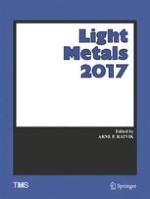2017 | OriginalPaper | Buchkapitel
Determination of Aluminum Oxide Thickness on the Annealed Surface of 8000 Series Aluminum Foil by Fourier Transform Infrared Spectroscopy
verfasst von : Özlem İnanç Uçar, Ayten Ekin Meşe, Onur Birbaşar, Murat Dündar, Durmuş Özdemir
Erschienen in: Light Metals 2017
Aktivieren Sie unsere intelligente Suche, um passende Fachinhalte oder Patente zu finden.
Wählen Sie Textabschnitte aus um mit Künstlicher Intelligenz passenden Patente zu finden. powered by
Markieren Sie Textabschnitte, um KI-gestützt weitere passende Inhalte zu finden. powered by
